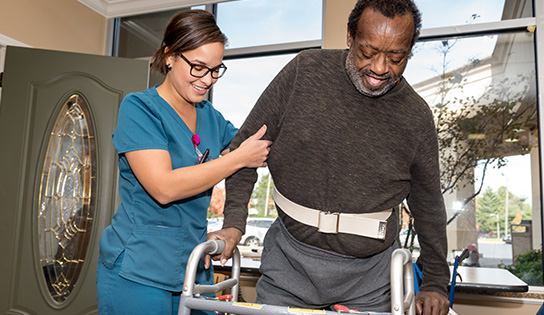One of the primary methods used to alleviate dyspnea in physical therapy is the application of regulated breathing activities. These exercises often concentrate on abdominal breathing, which encourages patients to use their breathing muscle rather than their upper chest muscles when inhaling. This method helps to maximize lung volume and effectiveness. Additionally, pursed lip breathing is another technique that can be helpful. This technique involves inhaling through the nose and breathing out slowly through compressed lips, which can assist to keep airways clear longer and render breathing feel more manageable. By incorporating these exercises into therapy sessions, physical therapists can provide patients with tools to manage their dyspnea both during and beyond of their sessions.
Another crucial element of controlling breathing difficulties in physical therapy is the development of an individualized exercise regimen. Tailoring exercises to satisfy the individual needs and abilities of each patient is essential. Therapists should slowly integrate aerobic exercises, such as ambulating or biking, in a controlled manner, allowing patients to develop their endurance over time. This incremental method helps patients to feel more comfortable with fitness activity while at the same time improving their lung function and overall endurance. It is vital for therapists to monitor patients carefully during these exercises to ensure they are not overworking themselves, which could result to increased shortness of breath.
Teaching also plays a major role in alleviating breathing difficulties during physical therapy appointments. Providing patients with information about their condition and the factors behind breathing difficulties can empower them to take charge of their health. Therapists can describe how elements like anxiety, posture, and environmental conditions can affect breathing. By comprehending these ideas, patients can discover to manage their symptoms more efficiently. Techniques such as anxiety reduction strategies and proper body mechanics can additionally assist in reducing the effects of dyspnea during daily activities and therapy appointments.
In summary, successfully alleviating breathing difficulties in physical therapy appointments involves a combination of breathing exercises, individualized exercise regimens, and patient teaching. By applying these effective methods, physical therapists can assist patients manage their breathing difficulties and improve their overall health. Collaboration between therapists and patients is crucial to create customized interventions that meet individual needs. With the right support and techniques, find more info patients can find relief from dyspnea and participate more completely in their physical therapy journey, eventually leading to a better standard of life.
